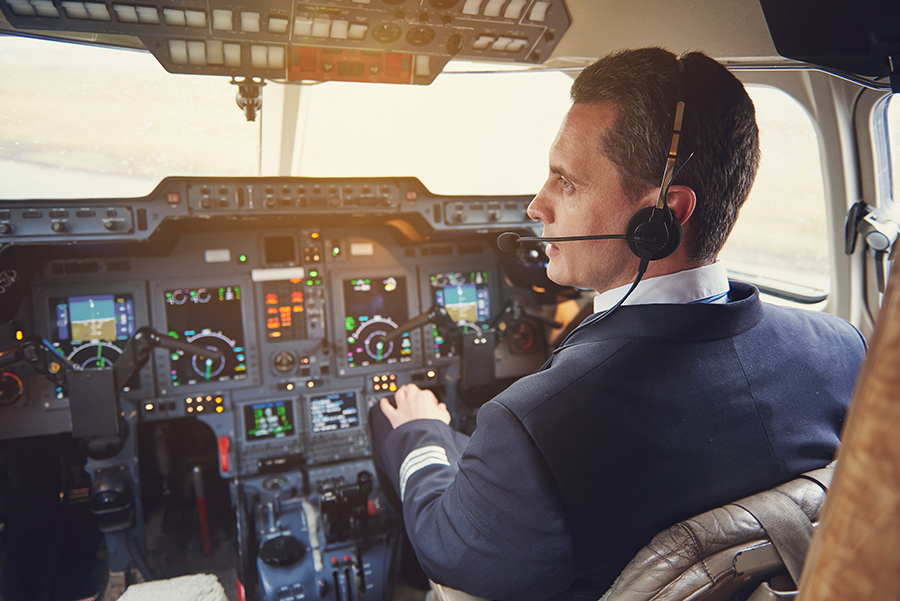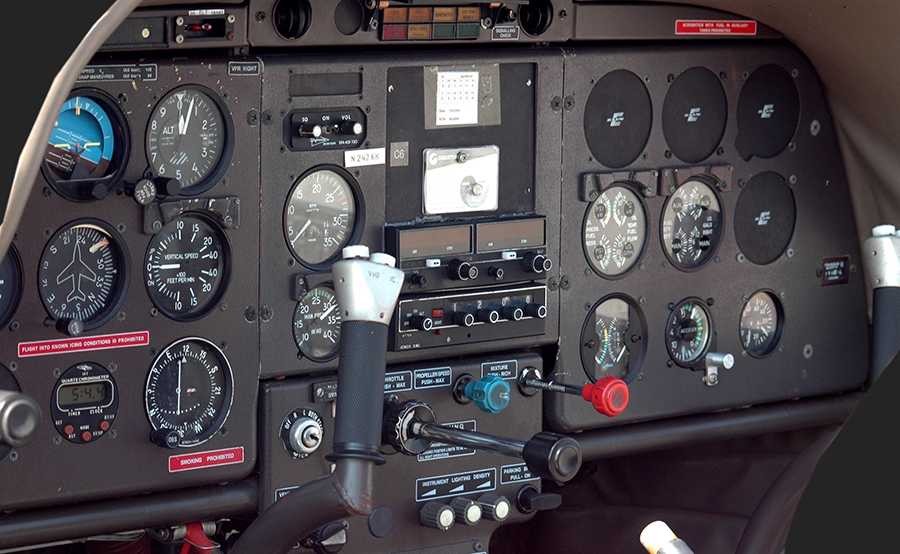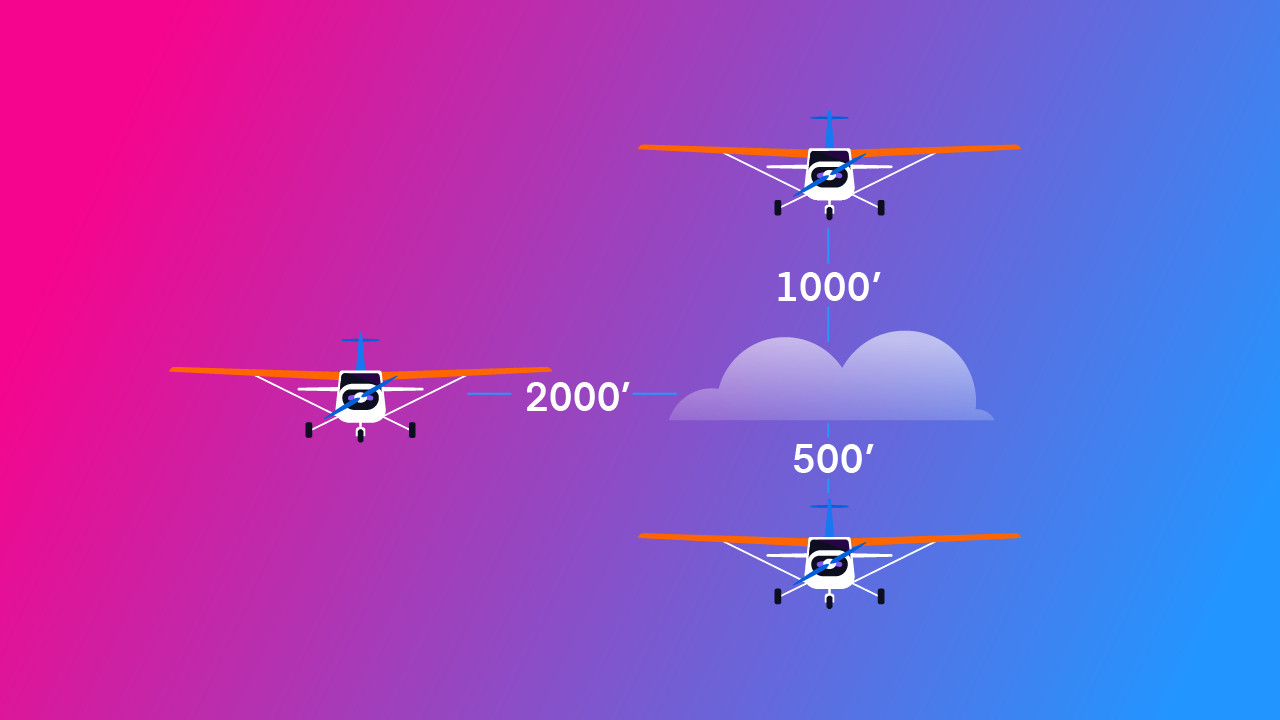-
What Is an "In-Ear" Aviation Headset?
-
What Is the Difference between In-Ear and Normal Aviation Headsets?
-
Are In-Ear Aviation Headsets Better Than Normal Headsets?
-
10 Things You Should Consider Before Purchasing an In-Ear Aviation Headset
- Noise Cancellation
- Comfort and Fit
- Durability
- Sound Quality
- Connectivity
- Battery Life
- Brand Reputation
- Price
- Additional Features
- Customer Support
-
The Best In-Ear Aviation Headsets for Pilots (2023)
- 1. Bose ProFlight Series 2 - Best Overall
- 2. AXIS In-Ear Aviation Headset - Best Value
- 3. FARO AIR In-Ear Headset - Best Budget Headset
- 4. Clarity Aloft Flex - Best Budget Headset with TSO Certification
- 5. Clarity Aloft Link - Best Budget Bluetooth
-
Conclusion
Welcome to our latest guide on the top 10 in-ear aviation headsets for pilots in 2023!
In this article, we’ll look at the best in-ear aviation headsets on the market for pilots based on factors such as noise cancellation, durability, and overall user experience.
Whether you’re a commercial pilot, flight instructor, or private pilot, we’ve got you covered with the latest and greatest in-ear aviation headsets.
Your journey to finding the perfect in-ear aviation headsets starts here.
Here’s a quick summary:
- Best Overall: Bose ProFlight Series 2:
- The Bose ProFlight Series 2 offers superior noise cancellation, lightweight design, TSO certification, and maximum comfort.
- Best Value: AXIS In-Ear Aviation Headset:
- The AXIS In-Ear Aviation Headset is a cost-effective alternative to high-end in-ear headsets while still providing excellent customer service and a lightweight and comfortable design.
- Best Budget Headset: FARO AIR In-Ear Headset:
- The FARO AIR In-Ear Headset offers an excellent balance of comfort, noise reduction, and ease of use at the lower-end price range.
- Best Budget Headset with TSO Certification: Clarity Aloft Flex:
- The Clarity Aloft Flex is a great option for pilots looking for a high-end in-ear aviation headset that is TSO certified, but its high price may be a deterrent for some pilots.
- Best Budget Headset with Bluetooth: Clarity Aloft Link:
- The Clarity Aloft Link in-ear aviation headset is a great option for pilots looking for a high-end in-ear aviation headset with Bluetooth functionality, but it lacks TSO certification.
What Is an “In-Ear” Aviation Headset?
An “in-ear” aviation headset is a type of headset that is worn inside the ear canal, as opposed to over or on the ear. In-ear headsets are designed to provide clear audio and reduce background noise through passive ear-plug-like seals, active noise cancellation, or a combination of both.
They are also often more compact and lightweight than over-the-ear headsets, making them more comfortable for extended use.
What Is the Difference between In-Ear and Normal Aviation Headsets?
Aviation headsets come in three primary forms:
- Over-Ear: covers your ears completely and creates a seal around them.
- On-Ear: rests on top of your ears, covering your ear canal.
- In-Ear: earplug-style headphones that can be inserted into your ear canal.
Over-ear aviation headsets are the most common and have been the default choice for most aviators. In recent years, however, with the progression of headset technology, in-ear headsets have become a possibility and are becoming very popular – particularly with the airline and corporate jet pilots.
Are In-Ear Aviation Headsets Better Than Normal Headsets?
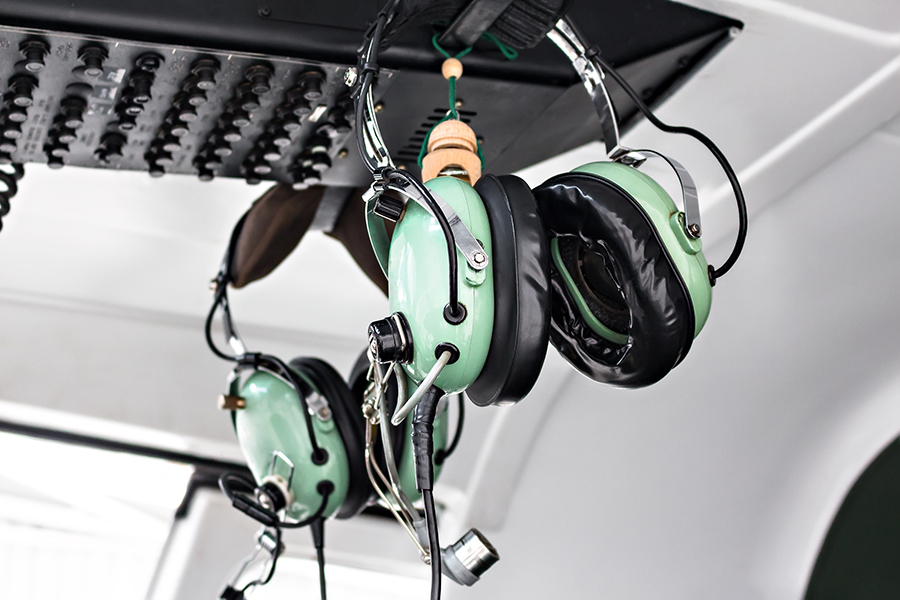
In-ear aviation headsets and over-ear aviation headsets both have their own unique benefits and drawbacks.
In-ear aviation headsets are smaller, more compact, and lightweight than over-ear ones, making them more comfortable for extended use. They can also accommodate headwear such as sunglasses and hats without disturbing the noise cancellation function.
On the other hand, over-ear aviation headsets tend to provide greater noise cancellation abilities. They are generally more durable, as they are less likely to get damaged as quickly as in-ear aviation headsets. Some users prefer the ability to place the headset on their head, in contrast to inserting an ear tip into their ear.
Ultimately, the choice between the two will depend on the individual’s personal preferences and requirements. Some pilots prefer the isolation and noise reduction of over-ear aviation headsets, while others prefer the comfort of in-ear aviation headsets.
To determine which one suits your needs, it’s important to give them all a go; many pilot shops will have various options available for testing purposes.
10 Things You Should Consider Before Purchasing an In-Ear Aviation Headset
When purchasing an in-ear aviation headset, there are several factors to consider to ensure that you choose a comfortable and effective headset that meets your needs.
Noise Cancellation
Noise cancellation is a critical feature of an aviation headset, as it helps reduce background noise and improve the clarity of communication. When looking for an in-ear aviation headset, consider the level of noise-cancellation that the headset offers.
Active noise cancellation (ANC) uses advanced technology to actively block out background noise, which is particularly useful in an aviation setting where there can be a lot of ambient noise from the engines and wind. On the other hand, passive noise-cancellation uses the earbud design to block out noise, but it is not necessarily as effective as active noise-cancellation at blocking out certain sounds. Some in-ear aviation headsets use a combination of both technologies, making use of the best of both worlds.
The most significant drawback of active noise cancellation is that it requires a power source to function (such as batteries) compared to passive noise cancellation, which requires no power source. Additionally, due to the advanced nature of active noise cancellation technology, ANC headsets are more expensive than their passive noise cancellation counterparts.
Overall, noise cancellation is a crucial aspect to consider when purchasing an in-ear aviation headset, as it can significantly improve the clarity of communication and make your flight experience more pleasant.
Comfort and Fit
Comfort and fit are important factors to consider when purchasing an in-ear aviation headset. The headset should fit snugly and comfortably in your ear, so it’s important to consider the size and shape of the earbuds and headband.
One of the best ways to ensure a comfortable fit is to try the headset on before you buy it. Many retailers and manufacturers provide earbud sizing kits that you can use to test different sizes and find the perfect fit for your ears.
Another aspect to consider is the weight and design of the headset. Look for a lightweight headset designed to be worn for prolonged periods without causing discomfort. Consider the materials used in the headset’s construction, such as memory foam or soft silicone, as they can make a big difference in terms of comfort.
It’s also worth considering the adjustability of the earbuds and headband, as this can make a big difference in comfort. Look for a headset designed to be adjusted to suit your head size and shape, as this will help ensure a comfortable fit.
Lastly, look for a headset designed to be worn for long periods; you should be able to wear it for several hours without experiencing pain, discomfort, or fatigue. Additionally, consider what you will wear with the headset, such as sunglasses or hats, and ensure that the headset can accommodate them without compromising on noise cancellation.
By considering the headset’s size, weight, design, materials, and adjustability, you can ensure that you choose a headset that is comfortable to wear and provides a good fit.
Durability
Durability is an essential factor to consider when purchasing an in-ear aviation headset. Aviation headsets are often exposed to harsh conditions, so looking for a model made of high-quality materials and designed to withstand wear and tear is vital.
Consider the materials used in the headset’s construction, such as plastic or aluminum, as they can make a big difference in terms of durability. Look for a headset made of durable materials that can withstand exposure to high temperatures, humidity, and pressure changes. The headband should also be made of durable and flexible materials which can withstand frequent adjustments.
Check the reviews and feedback of the headset and try to see if the headset has a good durability reputation. A headset with a history of breaking or malfunctioning is not a good investment.
Another aspect to consider is the manufacturer’s warranty policy. Look for a headset with a good warranty, as this can provide added peace of mind and protection in case of any issues.
Lastly, consider the maintenance of the headset; some headsets are easy to maintain, clean, and replace parts if needed, while others may require professional repair or replacement of parts.
Some passive in-ear aviation headsets require periodic replacement of the ear tips. Ensure that you understand how often you will have to make these replacements, how much they will cost, and that you will be able to source the required parts.
Durability is an essential factor to consider when purchasing an in-ear aviation headset, as it can ensure that the headset will last for a long time and withstand the harsh conditions of an aviation environment. By considering the headset’s materials, reputation, warranty, and maintenance, you can ensure that you purchase a durable and reliable headset that will meet your needs for many years.
Sound Quality
Sound quality is an essential aspect to consider when purchasing an in-ear aviation headset. You want a headset that has clear and crisp sound and microphone quality, ensuring you can hear all communications clearly and that others do not have trouble hearing you. This can make a significant difference in terms of safety.
A good way to check the sound quality of a headset is by watching (and listening) to demonstrations of the headset’s microphone on YouTube. Keep in mind that the audio recordings of an aircraft’s intercom audio are often lower quality than the audio delivered in the aircraft. Additionally, aircraft have different audio systems of varying audio quality, which may impact the headset’s performance in a video or audio recording.
Therefore, the only way to truly test a headset’s audio and microphone quality is to try it yourself in the aircraft you intend to fly. Try to borrow a friend’s headset, or see if your local pilot shop has a demo headset they’re willing to lend you.
Connectivity
When it comes to in-ear aviation headsets, connectivity is an important factor to consider. Many aviation headsets come with a 3.5mm jack connection, which allows you to connect your headset to various devices such as phones, tablets, and audio sources. This is ideal for listening to audio from music, podcasts, or app alerts while flying.
Some headsets are Bluetooth compatible, allowing you to connect wirelessly to your phone or other devices. This is ideal for pilots who want the convenience and freedom of not having to use a corded connection. Bluetooth connections are also ideal for phone calls and should be a significant consideration if you regularly have to make phone calls during a flight.
Ultimately, the best connectivity option for you will depend on your specific needs and preferences.
Battery Life
Battery life is an important aspect to consider when purchasing an in-ear aviation headset. A headset with a short battery life may not last through multiple flights, so checking the battery life and charging time before making your purchase is essential.
Furthermore, some aviation headsets don’t require a battery at all. Most passive noise cancellation headsets with no Bluetooth connectivity don’t require power sources, eliminating the need for batteries. These types of headsets should be a serious consideration if you don’t want to carry around a spare pair of batteries.
In general, look for a headset with a long battery life, ideally one that can last multiple flights without needing to be recharged or have the batteries replaced.
A headset with a built-in battery indicator is also a helpful feature, as it allows you to monitor the battery level and know when it’s time to charge it or change the batteries.
Most aviation headsets requiring batteries have some sort of low-battery indicator, but some don’t provide accurate readings when rechargeable batteries are used.
Brand Reputation
When purchasing an aviation headset, it is important to consider the brand’s reputation to ensure that you are getting a quality product from a reputable company. This is because a company with a good reputation is more likely to produce high-quality products that meet the expectations of its customers.
One way to gauge a brand’s reputation is by looking at customer reviews of the aviation headset. These reviews can provide valuable insight into other customers’ experiences who have purchased and used the product. Positive reviews are a good indication that the headset may be what you are looking for.
It’s also a good idea to look for independent reviews from experts in the field or industry publications. Additionally, research the company’s history, such as how long it has been in business and if it has any notable awards or certifications for its products. This can give you a better idea of the company’s track record and commitment to producing high-quality products.
A successful history is also an indication of what their commitment to the service of the headset will be in the future.
Price
When purchasing an in-ear aviation headset, you should consider your budget and what you are willing to spend.
It is also worth noting that a headset’s price does not always correspond to the quality of the product. You may find a headset that is less expensive than others but still offers good sound quality and comfort. On the other hand, an expensive headset may not necessarily be the best option for you as you may not make use of all the additional features. It is essential to consider what features are most important to you so that you can find a headset that offers those features within your budget.
It is also a good idea to compare prices from different retailers and check if any ongoing promotions or discounts could help you save money.
It is important to note that the cheapest headset may not be the best option for you either, but you don’t need to spend a lot of money to get a good-quality headset. Consider how often you fly and what features you will make use of. If you fly often, you may find the investment in a high-end aviation headset worthwhile.
Additional Features
When shopping for an in-ear aviation headset, you should consider whether additional features are important to you. Some headsets have volume controls, Bluetooth connectivity, or other extra features. It is crucial to consider what you will use the headset for and what features will enhance your experience or just eat into your budget.
For example, if you plan on using your headset for phone calls, Bluetooth connectivity might be an important feature for you. It allows you to easily connect your headset to your phone and make hands-free calls.
It’s important to note that additional features may come at an extra cost, so keep that in mind when deciding. Evaluate which features are important to you and how much you are willing to pay for them.
Customer Support
When researching an in-ear aviation headset, it is essential to investigate the customer support provided by the brand. This will help you understand if the company is responsive and helpful if you have any issues with the headset.
One way to research customer support is to check the company’s website for information on their contact methods, such as email, phone, or live chat. Additionally, you can look for customer reviews to see what other customers have to say about their experiences with the company’s customer support.
Another way is to check the warranty policy of the company. The warranty demonstrates the company’s confidence in its product and its commitment to customer satisfaction. Look for a company that offers a warranty that covers defects in materials and workmanship; this will give you peace of mind knowing that if something goes wrong with your headset, the company will stand behind their product and fix or replace it.
When considering customer support, you must consider what type of support you might need. Some people may need a lot of help with setup and configuration, while others may just need assistance troubleshooting a problem. Find a company that offers the type of support you need through a comprehensive FAQ, a detailed user manual, or live chat and phone support.
It is important to note that a bigger company does not necessarily equal better customer service. In some cases, a small business may provide better customer service than its corporate counterparts.
Customer reviews are often the best indication of a company’s level of customer service. Check if the company replies to negative reviews, and evaluate reviews that mention the level of customer service provided.
The Best In-Ear Aviation Headsets for Pilots (2023)
1. Bose ProFlight Series 2 – Best Overall
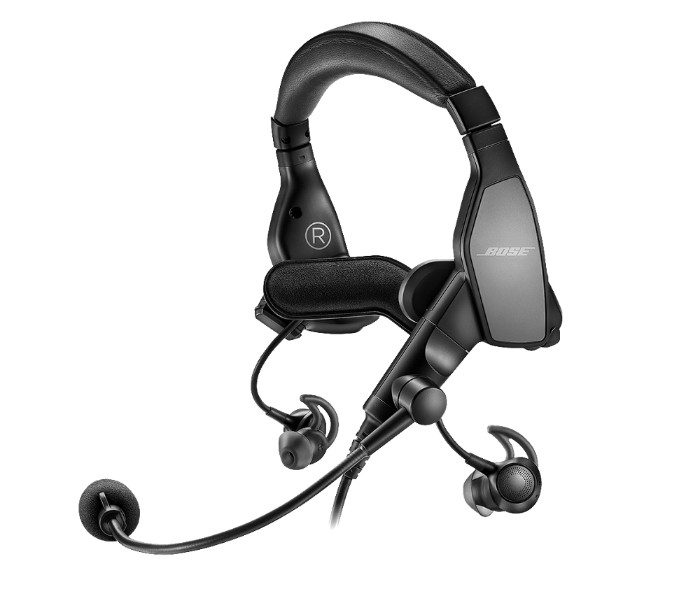
SPECIFICATIONS
- 45-hour battery life
- Active Noise Reduction (ANR)
- Bluetooth
- 4.5 oz (128g)
- 5-year Warranty
- Gel Tips
PROS
- Comfortable
- Unmatched noise cancellation
- Excellent battery life
- TSO certified
CONS
- Expensive
- Audio quality and noise reduction are not as good as the Bose A20 over-ear headset for a similar price.
REVIEW
The Bose ProFlight Series 2 is the best in-ear aviation headset on the market today. It offers superior noise cancellation, a lightweight design, and maximum comfort. Although it may not match the noise cancellation and sound quality of other over-ear headsets like the A20, it is still well worth the investment for pilots who are looking for a comfortable and efficient in-ear aviation headset. The ProFlight Series 2 is a must-have for any pilot who is looking for a convenient and comfortable way to fly.
Pilots who are in search of a comfortable and efficient in-ear aviation headset should definitely consider the Bose ProFlight Series 2. This headset is designed to provide an exceptional noise cancellation experience through its combination of ANR (Active Noise Reduction) technology and PNR (Passive Noise Reduction) from the in-ear earbuds. This feature ensures that pilots can fly comfortably for extended periods of time without the need for over-ear headsets that can be heavy and uncomfortable.
The ProFlight Series 2 is also designed for comfort and adjustability. The ProFlight allows pilots to wear a cap or glasses without breaking the ANR seal, which is a common problem with traditional over-ear headsets.
When it comes to sound quality and noise cancellation, the ProFlight Series 2 is designed with commercial pilots in mind. Commercial pilots tend to fly quieter turbine aircraft, so high-level noise reduction is not always necessary. The ProFlight Series 2 is designed to provide the best noise-cancellation experience while also providing maximum comfort.
It is important to note, however, that the ProFlight Series 2 is roughly the same price as the over-ear Bose A20, which is another popular aviation headset. Comparisons between the two are inevitable and the A20 may have an edge over the ProFlight Series 2 in terms of noise cancellation and sound quality. However, when it comes to comfort and ease of use, the ProFlight Series 2 is the clear winner.
2. AXIS In-Ear Aviation Headset – Best Value
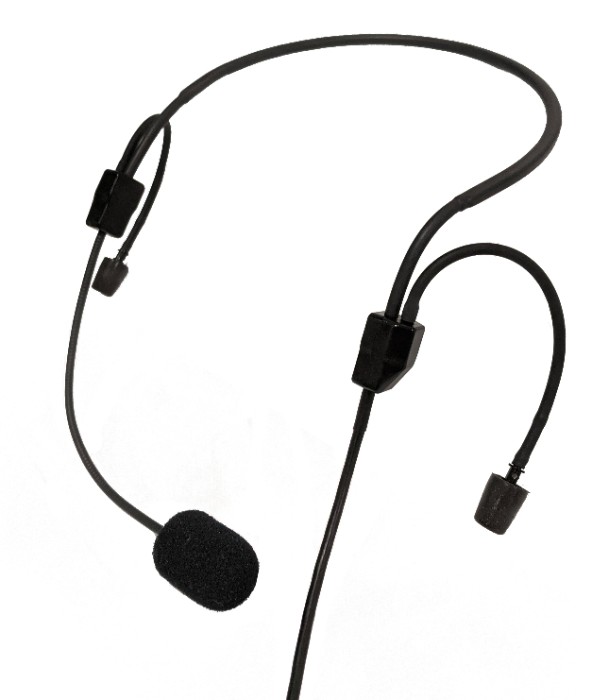
SPECIFICATIONS
- No battery (Passive Noise Reduction Only)
- 3.5mm input
- 1 oz (28g)
- 3-year Warranty, 30-Day Money Back Guarantee
- Foam Tips
PROS
- Outstanding customer service
- Very light
- Great value
- Durable
CONS
- Foam tips need to be replaced every few months
REVIEW
The AXIS In-Ear Aviation Headset offers a cost-effective alternative to high-end in-ear headsets while still providing excellent customer service as well as a lightweight and comfortable design. The AXIS is an excellent choice for pilots who don’t require Bluetooth or TSO certification and want an in-ear aviation headset that won’t break the bank.
Pilots looking for an in-ear aviation headset with all the benefits of more expensive models, but at a more affordable price point, should consider the AXIS In-Ear Aviation Headset. At $475, the AXIS offers a cost-effective alternative to high-end in-ear headsets like the Bose ProFlight Series 2, while still providing a range of features that make it stand out in its class.
One of the most notable features of the AXIS is its lightweight design, weighing roughly the same as a single AA battery. This, combined with the flexible frame, results in a headset that reduces clamping force to virtually zero, providing a comfortable fit for extended periods of use.
As a family-owned business, AXIS also stands out for its customer service. The company’s website offers a dedicated section with videos and graphics to help pilots use the AXIS optimally, as well as a quick reference card and user manual for easy reference. Additionally, the AXIS comes with a 30-day money-back guarantee and a three-year warranty, giving pilots peace of mind when making their purchases.
Another great feature of the AXIS is the use of standard foam tips, meaning pilots can replace them with the style and size that best suits them, and a list of recommended tips is available on the website.
The AXIS team is reportedly working on a Bluetooth version of their headset, and they will allow customers who currently own an AXIS headset to trade up to the Bluetooth version for a reduced price.
3. FARO AIR In-Ear Headset – Best Budget Headset
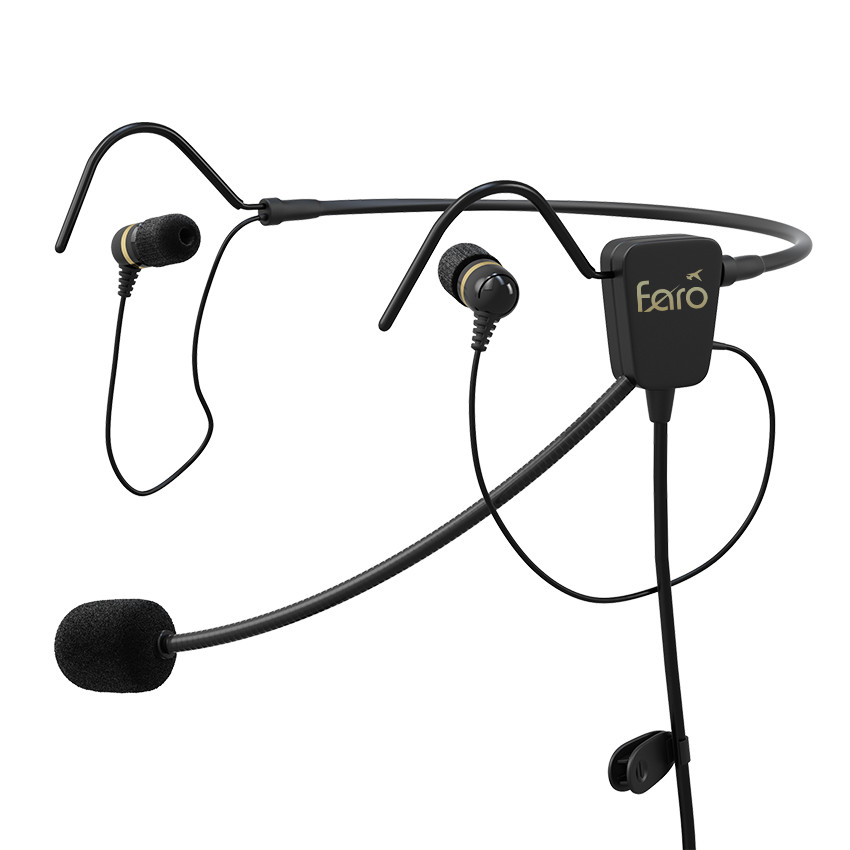
SPECIFICATIONS
- No battery (Passive Noise Reduction Only)
- 3.5mm input
- 1 oz (28g)
- 3-year Warranty
- Foam Tips
PROS
- Weighs as much as one AA battery
- Great value
CONS
- No carrying case included
REVIEW
The FARO AIR In-Ear Headset offers an excellent balance of comfort, noise reduction, and ease of use. Its lightweight design, three-year warranty, and replaceable foam earplugs make it an excellent choice for pilots looking for an in-ear aviation headset at the lower-end price range.
The FARO AIR In-Ear Headset is an excellent choice for pilots looking for a lightweight, comfortable, and effective in-ear aviation headset. Weighing in at only 1 oz, this headset is comfortable to wear even during long flights. The FARO AIR also comes with a three-year warranty, giving pilots peace of mind when making their purchases.
One of the standout features of the FARO AIR is its noise reduction capabilities. With up to 50 dB of noise reduction, this headset effectively blocks out ambient noise, which is often a concern at this price point. This feature makes the FARO AIR a great option for pilots on a tight budget.
The FARO AIR also comes with a 3.5mm aux input and dual volume controls, making it easy to connect to other devices and adjust audio levels as needed. Additionally, the headset features replaceable foam earplugs, allowing pilots to switch out the earplugs for a better fit and improved noise reduction.
One downside to the FARO AIR is that it does not come with a carrying case. Pilots will need to purchase one separately or find a different way to store and transport their headsets.
4. Clarity Aloft Flex – Best Budget Headset with TSO Certification
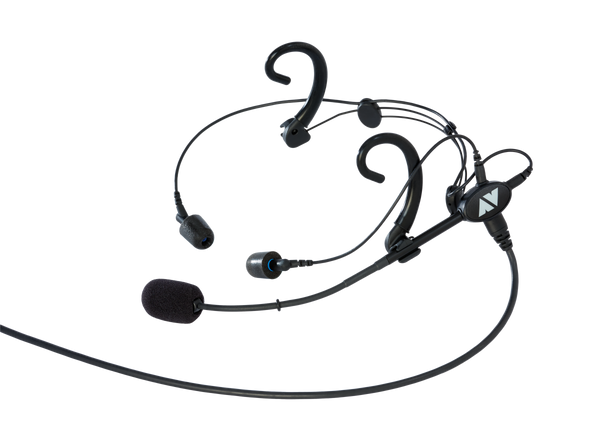
SPECIFICATIONS
- No battery (Passive Noise Reduction Only)
- 3.5mm input
- 2 oz (56g)
- 3-year Warranty
- Foam Tips
PROS
- TSO certified
CONS
- Expensive
- Foam tips need to be replaced every few months
REVIEW
The Clarity Aloft Flex is a great option for pilots looking for a high-end in-ear aviation headset that is TSO certified. However, the high price may be a deterrent for some pilots, and they may want to consider other options such as the AXIS in-ear headset, which offers similar features at a more affordable price, albeit without TSO certification.
Pilots looking for a high-end in-ear aviation headset should consider the Clarity Aloft Flex. This TSO-certified headset offers a variety of features that make it stand out in the in-ear aviation headset market, including a 3-year warranty with a 30-day money-back guarantee, great build quality, 3.5mm audio input, and a weight of less than 2 oz (56g).
While Flex delivers in many ways, it falls short in one department: price. At $775, it is only $225 cheaper than the Bose ProFlight Series 2, which offers ANR, Bluetooth, and gel tips.
In comparison, the AXIS offers all the features of the Flex except for the TSO certification, at a significantly lower price of $475.
5. Clarity Aloft Link – Best Budget Bluetooth
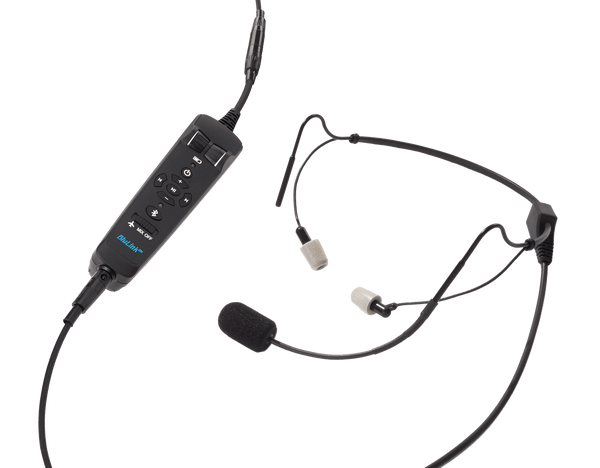
SPECIFICATIONS
- 3-year Warranty
- Foam Tips
PROS
- Great value
- Bluetooth
CONS
- Not TSO certified
- Foam tips need to be replaced every few months
REVIEW
The Clarity Aloft Link in-ear aviation headset is a great option for pilots looking for a high-end in-ear aviation headset with Bluetooth functionality. Its 3-year warranty, great build quality, 3.5mm audio input, and lightweight design make it a great option for pilots looking for a comfortable and convenient headset. However, its lack of TSO certification may be a drawback for some pilots and they may want to consider other options that have TSO certification and Bluetooth functionality.
The Clarity Aloft Link in-ear aviation headset is a great option for pilots looking for a high-end in-ear headset with Bluetooth functionality. This non-TSO-certified headset is priced at $795, which makes it a great consideration if you want Bluetooth functionality at a lower price than the Bose ProFlight Series 2.
The Clarity Aloft Link also offers a 3-year warranty with a 30-day money-back guarantee and great build quality. Additionally, it has a 3.5mm audio input, and it weighs less than 2 oz (56g), making it comfortable to wear for extended periods of time.
The headset is not TSO certified, which means that your airline may not allow the headset to be worn for commercial flights. This can be a drawback for some pilots (particularly at this price point), as TSO certification is a requirement for many commercial aviation operations.
Conclusion
In conclusion, there are a variety of in-ear aviation headsets available on the market, each with its own set of features and benefits.
While there are several options, any one of the headsets on this list will serve you well.
Have fun and happy flying!
